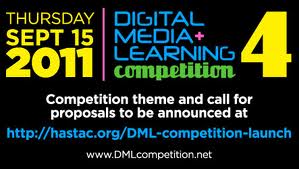I am two months into my work with Mount Greylock Regional High School, where I am responsible for a nascent program in Digital Media and Learning. While the role is relatively uncharted at the school, I knew that I wanted to establish common ground regarding how we understood digital media and learning, and in specific, digital citizenship.

Liza Barrett teaches English at Mount Greylock and was cautiously eager to integrate technology with curriculum. Her 7th-grade classes typically do a multi-week exploration of autobiography in the fall, and we decided to fold digital citizenship into their work. Here is a sketch of our goals, process, and outcomes.
“Real” selves
Rather than simply tell students what to think, we asked them to generate ideas about themselves in a variety of contexts. First, we asked them to do a series of exercises, writings, and discussions concerning the different literal/physical/”real” contexts where they might find themselves—the classroom, the home, the playing field, hanging out with friends. The work was designed to raise their awareness of different contexts, their “self,” and how they act in those contexts. Of nearly 100 students, almost no one listed a digital context for themselves. Our work, however, suggests that they spend on average 20-25% of their waking time in some sort of digital context. (For recent data on teens and digital media, see Kristen Purcell’s presentation for Pew Research. Of note, “Some 76% of ALL teens are “social media users.“)
Digital Selves
Our next step was to investigate the digital contexts where students spend time. Across the board, these discussions were especially robust. Students shared places where they hang out with friends, where they spend time and money, and where they leave a digital footprint. Their comments were varied, from sharing ideas about applications and sites to expressing concerns about privacy, misrepresentation, and needing to unplug. We also defined citizenship and asked them to make linkages to the key concepts inherent in the definition—citizens belong to communities and groups, and they have rights and responsibilities. What then are your rights and responsibilities in a digitally connected world?
The culmination of the project presented students with a choice between two autobiographical essay assignments, both offering opportunities to include their digital “self” as a topic. We also devised a project for collaborative group work where the kids synthesized their findings and opinions on digital citizenship to make a tri-fold mock-up/prototype pamphlet for elementary school students, presenting their Top Five Tips for being a good Digital Citizen. This project allowed students to distill their ideas, and to become teachers that share what they believe and know in an intelligent fashion.
Of note, our in-class work asked students to map out the hours of the day—asleep, awake—and then come up with an estimate of hours spent on some form of digital media (usually connected digital media: websites, games, mobiles, apps, etc.). The averages across classes suggest that 20-25% of their waking time spent with/in the digital. This specific exercise was especially powerful in that it implicitly underscored why we should investigate selfhood in a digitally connected world. It also highlighted our broader need to think about how kids are learning in these spheres and what Mount Greylock is doing to lead that process. Creating a Digital Citizenship unit that asks the entire incoming 7th grade to rigorously investigate their roles in these contexts is an amazing step toward this goal.
 We wanted to see what students would do if they were given the chance to curate a local museum and share their experiences with peers back at school. Karin Stack, local charter school art and digital teacher at Berkshire Arts and Technology School (BART), agreed to bring several teams of middle school students to the Berkshire Museum in Pittsfield, MA.
We wanted to see what students would do if they were given the chance to curate a local museum and share their experiences with peers back at school. Karin Stack, local charter school art and digital teacher at Berkshire Arts and Technology School (BART), agreed to bring several teams of middle school students to the Berkshire Museum in Pittsfield, MA. We’ll have more extensive data and feedback to report in the near future!
We’ll have more extensive data and feedback to report in the near future!














